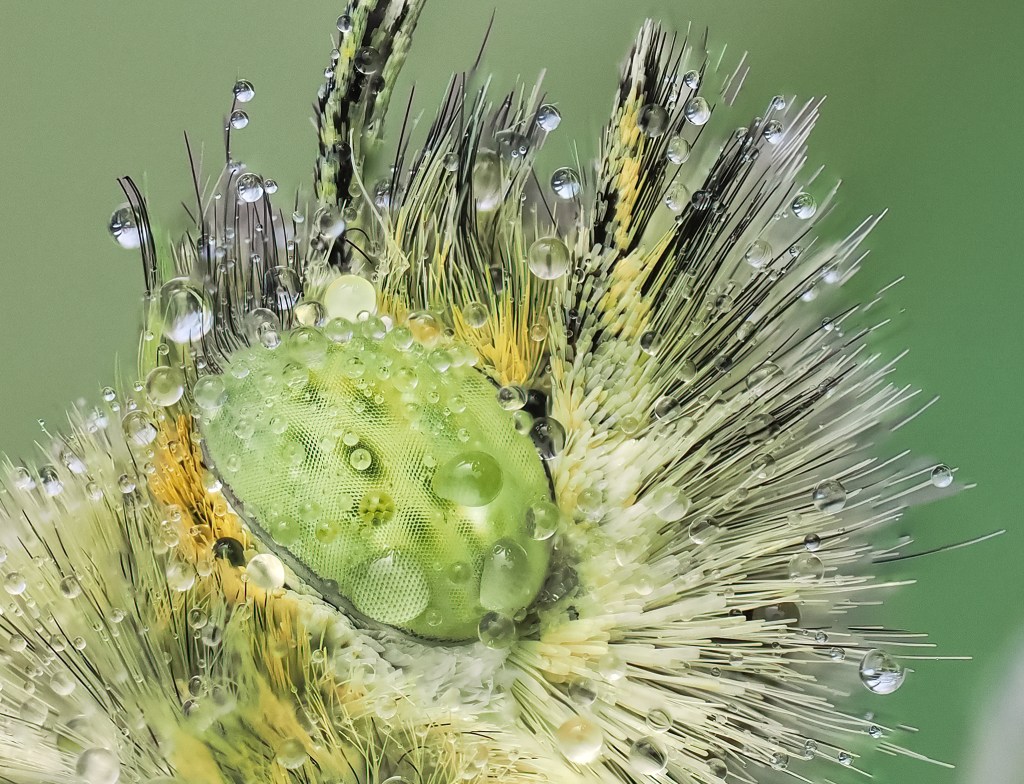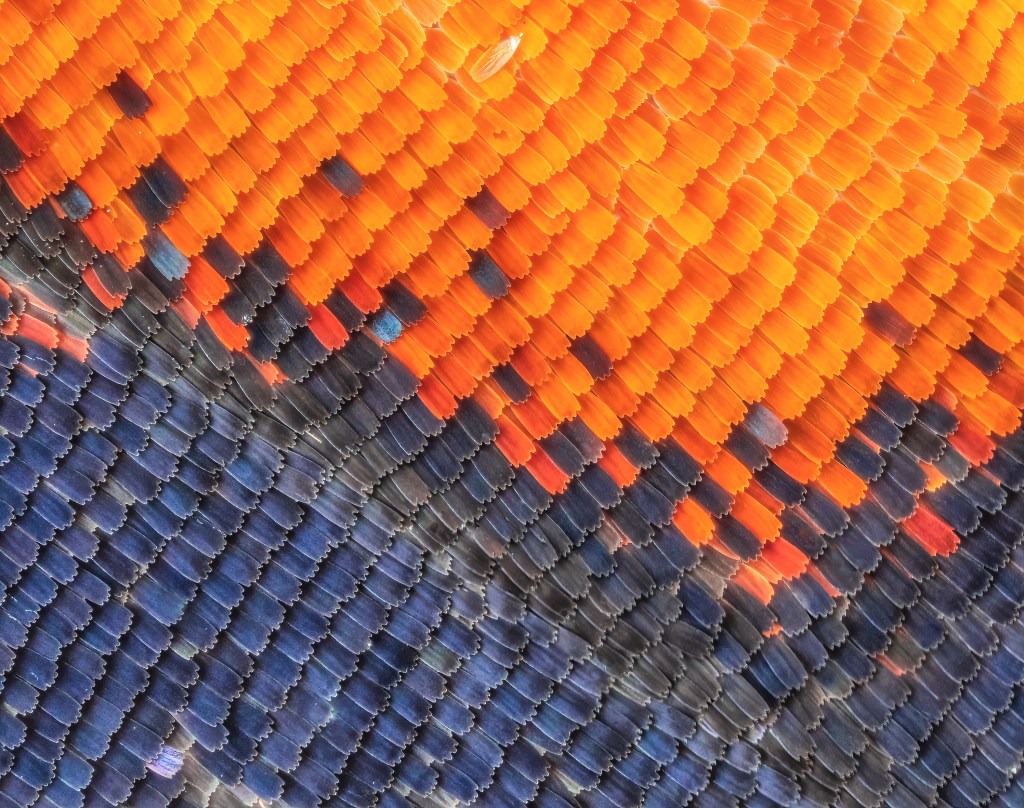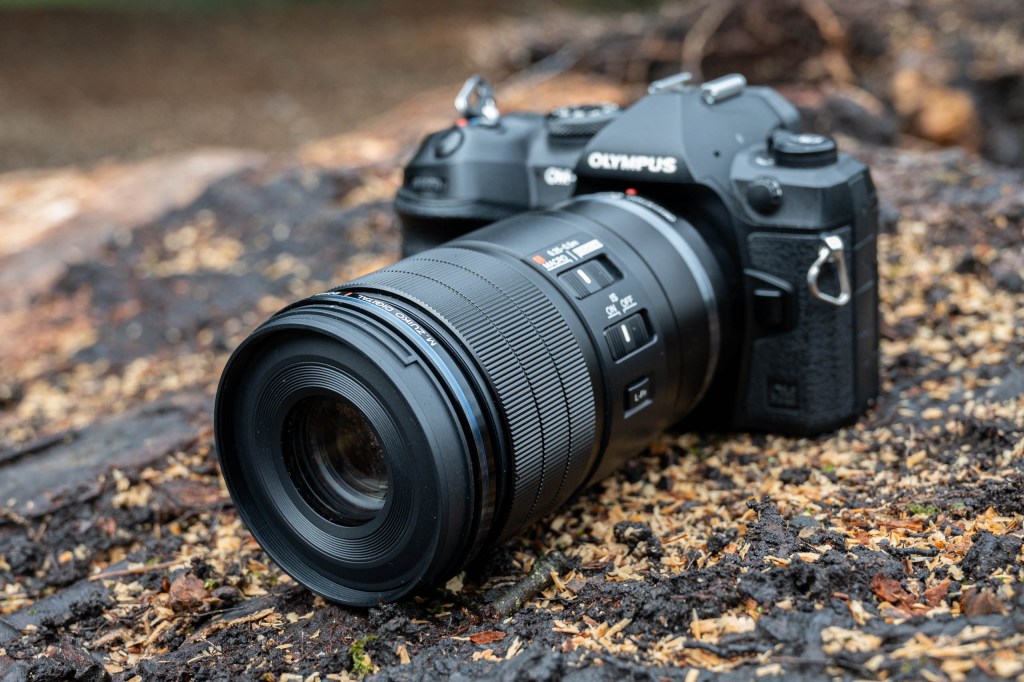What’s it like to shoot with a lens that has up to 4x magnification? Andrew Fusek Peters reports on the new OM System 90mm F3.5 Macro IS PRO lens, one of the newest lenses for Micro Four Thirds and Olympus / OM System cameras.
OM System 90mm F3.5 Macro IS PRO lens at a glance:
- $1499 / £1299
- 180mm equivalent macro lens
- Minimum focus distance 0.25m
- 2x maximum magnification
- 4x magnification with MC-20 2x teleconverter
- Built-in optical stabilization, up to 7 stops
- Weather sealed to a rating of IP53
- Weight 453g, length 136mm, diameter 69.8mm
- 62mm filter diameter

Andrew Fusek Petres Using the OM System 90mm Macro lens
When OM Digital Solutions (formerly Olympus) announced the new OM System M.Zuiko ED 90mm F3.5 Macro IS PRO, I had been already been working with a loan copy for a few weeks and had been able to put this flagship lens through its paces. Since going from full-frame to Micro Four Thirds five years ago, I have absolutely loved the sharpness of the tiny Olympus 60mm f/2.8 macro. But I was keen for a lens with a longer working distance, not just for skittish subjects but also when using lighting setups from continuous lighting to diffused flash. The 60mm was not optically stabilised, so again this was a step up with the 90mm.
I also previously owned the famous Sigma 180mm F2.8 Macro, with which I have seen other photographers get amazing results. But to call it a rocket-launcher in weight (1.7kg) and size is no understatement, and it ended up gathering dust in my cupboard. For my style of shooting, I was looking for something more compact and lightweight, and it looks like the OM 90mm f/3.5 has answered my expectations.

OM System 90mm F3.5 Macro IS PRO lens with manual focus clutch
OM System 90mm F3.5 Macro – Build and Handling
Measuring 136 x 69.8mm, this lens sits snugly on my Olympus OM-1 camera body, and won’t overbalance smaller bodies such as the Olympus OM-5. The construction is half-plastic and half-metal, but that reduces the weight to 453 grams. Its 90mm focal length is the full frame equivalent of 180mm, giving a 14 degree field of view. Optically, it has 18 elements in 3 groups, with a Fluorine front coating to resist dirt, and the aperture range is F3.5-F22.
As with other PRO lenses, the manual focus clutch is a fantastic addition, and when engaged, automatically gives you focus peaking which can be essential for very close, single shot work. The slider switches are easy to click while in the field, giving options from the full focus range to 0.25-0.5m, plus an S Macro setting for getting to the super close 0.224m setting for 2:1 magnification. Remember, these measurements are from the sensor surface, so with 2:1 magnification, the front of the lens is 65mm from the subject {not including the hood}
Although it does not come with a tripod collar, the lens is built to take the collar from the Olympus 40-150mm F2.8. This is immensely useful for still subjects and focus bracketing.
OM System 90mm F3.5 Macro Bokeh and Depth of Field
One complaint often thrown at Micro Four Thirds is that the increased depth of field means that beautiful bokeh goes out of the window. Let me address this in two ways. For macro shooters, the more depth of field, the better, especially for insects such as dragonflies and butterflies where we often want our close-ups sharp from back to front, whether through single shots or from focus stacking. But in an ideal world, we want our subject sharp, but the background rendered in a pleasing blur. I have never experienced problems with this in M43 – it really is all about how you set up your shot. In the case of this roosting green-veined white, the closer I got, even with a handheld focus stack, the more magical both foreground and background became. I am certainly happy with the result.

Hand held, focus stacked portrait of Green-Veined White, taken with OM System 90mm macro lens, 1/250sec, F9, ISO 640. Photo credit: Andrew Fusek Peters
OM System 90mm F3.5 Macro Handheld Stacking
With the Olympus 60mm macro lens and my EM-1 Mark III or E-M1X, if my subject was not moving on a twig or in a breeze, I occasionally managed to get the semi-decent hand-held focus stack. This has dramatically changed when the 90mm lens is paired with the OM1, as if the two were meant for each other. You can specify depth of field from 1-10 and number of images up to 15, in raw or JPEG, and the camera will take several images in front of your focus point and the rest behind. What I find utterly extraordinary is that this works even with my shaky hands and incredibly, if there is slight movement of the subject. The result is almost always a very sharp JPEG (come on OMDS, surely you can output this as a TIFF or raw file like hand-held hi-res!).
Suddenly, I can respond to nature in the moment, with available light (although this still works brilliantly with flash) and get super close in to a pair of mating pearl bordered fritillaries and see the magic unfold. The camera also saves all the stacked images if you want to go away and process them yourself. This is where the OM System goal of using computational methods really does help the outdoor photographer.
Using Teleconverters with the OM 90mm F3.5 Macro
At last we have a lens that does not need modified extension tubes, but is made to fit the Olympus / OM System MC-14 and MC-20 teleconverters to give up to 4x magnification (which is equivalent to 8x on full-frame). As this lens gets extremely close, by the time you add the 1.4x or 2x teleconverters, most of the time you will need a tripod and remote shutter release. At this distance, the depth of field is very narrow and focus bracketing rather than focus stacking is your best solution.

Eye of Hibernating Peacock taken with OM System 90mm Macro lens and 2X Converter, 1/10sec, F10, 320 ISO. Photo: Andrew Fusek Peters.
I wanted to try out both teleconverters and found a roosting white butterfly at dawn covered in dew drops. I used a bracket of 70 frames, which revealed how sharp this combo is. Even with the 2x converter and a stack of 15 frames in camera, the eye of a hibernating peacock revealed extraordinary details. At this level of magnification, you need a rock-solid tripod and a stationary subject. But here we finally have a lens that comes close to bridging the gap between micro and macro.

Dew Covered Small White Butterfly taken with OM System 90mm Macro lens and 1.4X Converter, 1/100sec, F7.1, ISO 200. Photo: Andrew Fusek Peters
OM System 90mm F3.5 Macro Depth of Field And Diffraction
This is one of the sharpest lenses I have ever worked with, even compared to my old Canon EF 100mm f/2.8 L Macro IS USM, and certainly at another level to the Olympus 60mm F2.8 Macro. The biggest test is shooting at smaller f-stops. But in my experience, the worries about diffraction are not well founded.
I was working in the field photographing the larvae of a Purple Emperor butterfly, using the new Cygnustech flash diffuser made especially for this lens. Although it is probably sharpest from f/5.6-f/8, I had no problems shooting at f/16 and was confident of good results. Other testers have even pushed the lens to f/22, and the very slight softness is easily dealt with in post-processing. If your settings are right and with some judicious but not over the top sharpening, the results can be astounding. Here the true purpose of this macro lens is revealed, as are the intimate secrets of nature.

Larva of Purple Emperor Butterfly taken with OM System 90mm Macro lens, 1/200sec, F13, ISO 200. Photo: Andrew Fusek Peters.
OM System 90mm F3.5 Macro lens Performance/Pros and Cons
In the field, the lens’s compact size and light weight, added to the fast autofocus and easy focus clutch to give me manual focus peaking, adds up to a compelling package. For my work with butterflies, I have focus stacking set to one of my custom buttons, which means that I can respond quickly to changing situations and be confident of getting a very clean stack in not-too breezy conditions. In cloudier weather, the lens works incredibly quickly with my Olympus FL-700WR flash to produce ultra-sharp single shots or stacked/bracketed exposures. Within a month of shooting, it was obvious I needed to buy a further OM-1 just to go with this lens and have a permanent macro set up ready to go.

Pearl-Bordered Fritillary Butterfly’s Eye taken with OM System 90mm Macro Lens, 1/250sec, F7.1, ISO 800. Photo credit: Andrew Fusek Peters
What else would I have liked? While OM System are leaders in IBIS, at 2:1 magnification you really are going to want a tripod with remote control or flash. As I said earlier, it would be good to update in-camera focus stacking to give 25-30 images, as depth of field is razor-thin when very close in. However, this really is nit-picking.

Small Pearl-Bordered Butterfly’s Eye taken with OM System 90mm Macro Lens 1/100sec, F14, ISO 250. Photo credit: Andrew Fusek Peters
The 2:1 magnification ratio, going up to 4:1 with the MC-20 2x teleconverter, is almost unheard of for a macro lens, with such magnification usually only available with manual focus. It is the world’s first 2:1 autofocus macro lens that can also focus to infinity for general photography. The minimum subject field is 8.7 x 6.5 mm, going to 4.3 x 3.3 mm with the 2x teleconverter. There is no other lens that gets this close without the addition of extension tubes or other accessories. It was incredible to use the MC-20 and a bracket of 99 shots to show the scales of a red admiral wing in intense detail.

Scales of a Red Admiral Butterfly’s Wing taken with OM System 90mm Macro lens and 2X converter, 1/15sec, F10, ISO 200. Photo: Andrew Fusek Peters
Summary of the OM System 90mm F3.5 Macro lens
Overall, the facts and figures around this lens are pretty much irrelevant to my work as a wildlife photographer. I am only interested in results and the ultimate test is whether the images deliver in quality for my magazine, newspaper and online work. Is the OM System M.Zuiko ED 90mm F3.5 Macro IS PRO the one macro lens to rule them all? Certainly, for my work, this is one of the sharpest lenses I have ever used, and it has enabled me to get closer to my subjects than any other macro lens.
With this Micro Four Thirds lens, I have been able to push boundaries. I found a female chaffinch sitting on her nest in a hedge, right next to a busy lane full of cars, dogs and walkers. Taking care not to disturb her, I caught an incredible shot, as if the eye of the lens had a moment where the eye of nature stared back and was witness in a small, intimate world where new life would soon sing out.

The Eye of a Female Chaffinch taken with OM System 90mm Macro lens, 1/100sec, F3.5, ISO 1250. Photo credit: Andrew Fusek Peters
Related reading:









